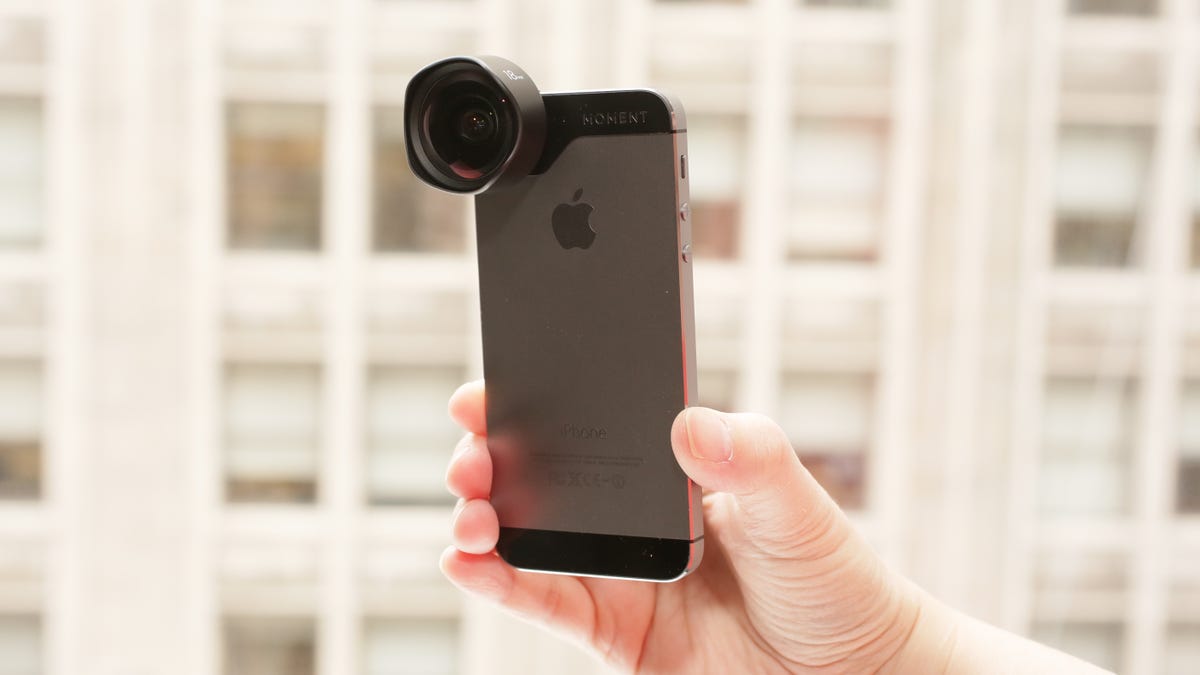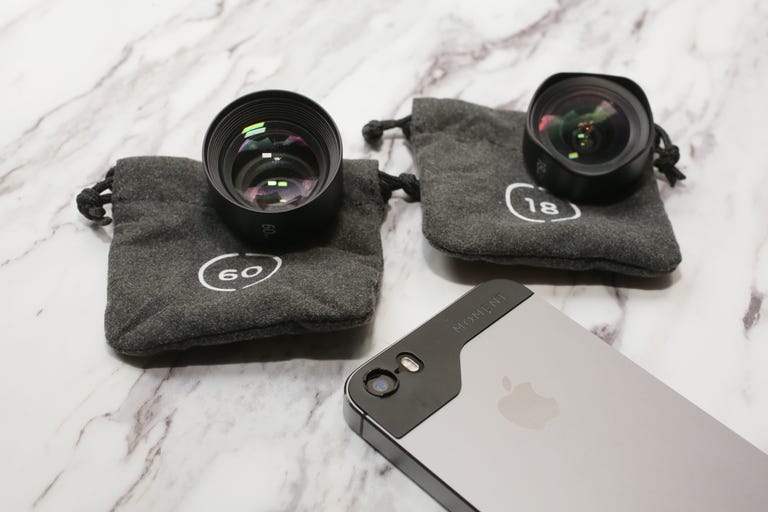 Why You Can Trust CNET
Why You Can Trust CNET Moment Lenses review: Moment lenses artfully change your phone's angle of view
These attractive metal-and-glass lenses offer a handful of phone cameras a premium build for a premium price.
Moment is a new player in the phone accessories market, looking to grab a slightly more upscale/advanced photographer than the typical Olloclip buyer. Its lenses, which currently consist of a roughly 60mm equivalent (tele) and an approximately 18mm equivalent (wide) have the sturdy, somewhat heavy design you expect from something made of a lot of glass and metal. And if you're thinking of getting them as a gift, they're quite nicely packaged in a black box rather than the usual blister pack, with cloth carrying bags. The lenses cost $100 each globally (which converts to about £62 and AU$115), and are currently only available via momentlens.co.
The Good
The Bad
The Bottom Line

Moment's system has the advantage of making the lenses phone-independent: as long as they produce a mount, the lenses will work on any phone, so you don't lose your investment if you switch phones. In contrast, with Olloclip the lens and mount are combined so they're phone specific. At the, um, moment, the company has mounts for the
; the, the S5 and the Note 3; the ; and back through the 4 plus mount preorders for the 6/6 Plus. Each lens comes with a mounting plate, and you can buy the plates solo for $10 each (roughly £6 and AU$12). The glue holds very tightly; I wasn't worried about the lens falling off, but on the other hand you have to be very careful about placement when attaching it, and I'm not looking forward to removing it from my test phone.The system is composed of two parts, a metal plate that glues to the back of your phone, incorporating a tiny bayonet mount and a cutout for the flash. It's difficult to quickly swap or mount lenses; I frequently find myself fumbling to align the lens to the mount. There's a gray dot on the back of the lens intended to indicate the final position, but it's hard to see in low light and there's no matching dot on the mount to show you where to align it to slip in. In addition, the front element of the lens is unprotected, so the fumbling occasionally results in accidentally touching the lens. If you switch between Canon (rotate clockwise to mount the lens) and Nikon (counterclockwise) bodies, you know what that momentary lens fumble feels like.
The two focal lengths are well chosen, providing a significantly wider or narrower angle of view than most phone cameras', and the tele lens delivers nice separation between the foreground and the background, making it a nice portrait-lens option. The bright, clear glass doesn't seem to reduce the amount of light reaching the phone's lens -- remember, these work on top of the built-in lens -- which is really important given how little exposure latitude most phone cameras have.
Moment also offers a camera app to use with the lenses, though you can use them with any camera app. But because they are wider or narrower than the built-in lens, and because it has a wide focus area, the standard iOS 8 camera app didn't always expose or white balance exactly right in full auto, especially with the wide lens.
The app, currently available only for
and awaiting App Store approval (I got to play with a prerelease version), is basic with a clean interface, and some nice though not novel features. You can also set it to continuous autofocus as well, or use tap-to-focus. You can pull up a vertical slider to manually focus or a horizontal slider for exposure compensation, or double tap to split the focus and exposure points. There's a self timer offering from 3 to 30 seconds and for up to 5 shots; an optional grid or square-framing display; and direct links to Pro Tips, the Moment blog ("Journal") and for feedback.Access to your photos after shooting and the usual big shutter button round out your controls. You do have to use another app for shooting video or other specialty modes. There's a built-in image browser so you don't have to jump out to Photos to review your images.
Overall, each of the Moment lenses makes a nice package. However, the tele lens produces shots that are a hair softer than the wide lens' or the naked
' lens. The longer focal length also makes photos more subject to camera shake. Keep in mind that they look fine on the phone, but soft when zoomed in on an or larger screens. The wide lens produced comparably sharp photos to the native lens.The bigger issue with the Moment system is that the mount is not designed to be removed on a regular basis (though it comes with extra glue), and you can't fit other lenses over it; some cases may not fit either, depending upon how tight they get around the camera opening or the slightly raised bump of the bayonet. Also, these large lenses will block the flash.
At $100, they're also pretty expensive. For instance, the Olloclip 4-in-1 delivers 4 lenses for $70 (£60 and AUS$90). But with their high-quality design and feel, they are likely to appeal to people who are used to pro camera lenses -- and who are likely to be willing to pay the price.


